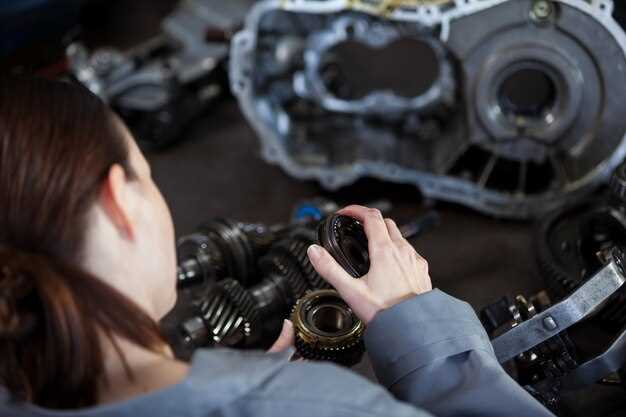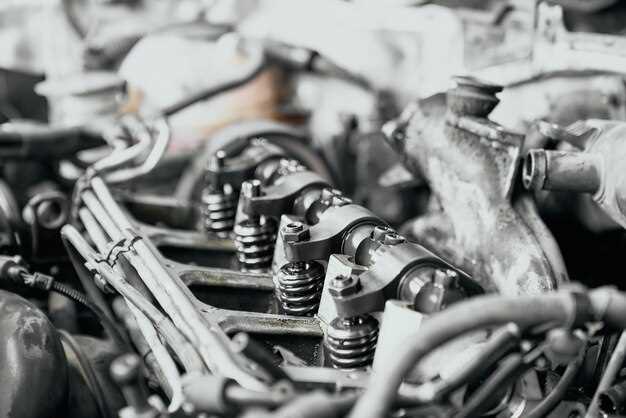
When it comes to enhancing the performance of a racing engine, the choice of pistons and connecting rods cannot be overlooked. These components play a critical role in the engine’s ability to produce power, withstand high RPMs, and maintain reliability under extreme conditions. Selecting the right racing pistons and rods is essential for achieving optimal performance and ensuring that your engine can handle the demands of competitive racing.
Pistons are responsible for converting the pressure from combusted fuel into mechanical energy, making their design a key factor in power output. Variables such as material, weight, and compression ratio directly impact engine performance. Racing pistons, typically constructed from high-strength alloys such as forged aluminum, are designed to endure higher thermal and mechanical stresses than standard pistons. Understanding the characteristics of different piston designs will enable racers to tailor their engines for specific racing conditions.
Equally important are the connecting rods, which connect the pistons to the crankshaft. A robust and lightweight design is crucial, as the rods must handle significant forces during operation. Upgrading to performance rods can reduce weight and increase strength, contributing to faster engine response and improved RPM capabilities. The choice between forged steel and aluminum rods, as well as the decision regarding rod length and diameter, will heavily influence engine dynamics and overall performance.
This guide will delve into the critical aspects you need to consider when selecting racing pistons and rods, from material choices to design variables, ensuring that you make informed decisions for your performance setup.
Factors to Consider When Selecting Racing Pistons

When choosing racing pistons, several critical factors must be evaluated to ensure optimal performance and efficiency in high-stress environments. Understanding these parameters can significantly impact engine power, reliability, and longevity.
1. Material: The material of the piston significantly affects its weight and durability. Common materials include aluminum and forged steel. Aluminum pistons are lightweight, offering better acceleration but may not withstand extreme heat as effectively as forged steel. Evaluating the intended application will help determine the best material choice.
2. Compression Ratio: The compression ratio is pivotal for achieving desired power outputs and efficiency. Higher compression can increase horsepower but may require higher octane fuel and careful tuning to avoid knocking. Assess the engine setup and requirements before finalizing the ratio.
3. Piston Design: The design encompasses various factors such as dome shape, skirt length, and cooling features. Flat-top pistons favor high RPM setups, while dome-shaped pistons can improve combustion efficiency. Choose a design that aligns with your engine’s performance goals.
4. Forging vs. Casting: Forged pistons are typically stronger and can withstand higher stress than cast pistons. However, they are often more expensive. For racing applications where durability is essential, opting for forged pistons is advisable.
5. Weight: Lighter pistons can enhance engine response and increase RPM capabilities. However, a balance must be struck between weight and strength. Consider your engine’s design and how lightweight components will perform under race conditions.
6. Clearance and Fitment: Ensuring proper clearance between the piston and cylinder walls is critical to avoid friction and heat buildup. Measure the bore size and ensure that the selected pistons meet the specifications of your engine block.
7. Ring Configuration: The piston ring setup influences oil control, blow-by, and overall engine efficiency. Choose configurations optimized for the specific type of racing and engine design.
8. Cost and Budget: Racing components can vary widely in price. While investing in high-quality pistons is crucial, establishing a budget that aligns with your overall engine build plan is also important. Avoid compromising quality for cost.
In summary, selecting the right racing pistons involves careful consideration of multiple factors including material, compression ratio, design, forging, weight, clearance, ring configuration, and cost. Thorough research and consultation with experts can aid in making an informed decision that enhances your engine’s performance.
How to Determine the Right Connecting Rod Length and Material
Selecting the appropriate connecting rod length and material is crucial for optimizing engine performance and durability. The length of the connecting rod influences the engine’s stroke geometry, affecting power delivery, RPM range, and overall efficiency.
Connecting Rod Length: The rod length primarily impacts the engine’s mechanical advantage and piston motion. A longer rod reduces the angle of the piston at top dead center (TDC) and bottom dead center (BDC), resulting in less lateral load on the cylinder wall and reduced friction. This typically enhances performance at high RPMs. However, a longer rod may also alter the engine’s torque curve, requiring careful consideration based on your performance goals. Conversely, shorter rods can provide increased piston speed and improved torque at lower RPMs, ideal for applications favoring quick acceleration.
Material Selection: Connecting rods are commonly made from steel, aluminum, or titanium, each providing different benefits. Steel rods are known for their durability and strength, making them suitable for high-power applications. They are often favored in racing environments where reliability is paramount. Aluminum rods, while lighter and capable of high RPM performance, tend to be less durable and are typically used in more specialized applications where weight savings are critical. Titanium rods offer an excellent strength-to-weight ratio, but their cost can be prohibitive for many builds. Choosing the right material depends on the specific demands of your engine setup, including expected horsepower, RPM limits, and the intended use of the vehicle.
Additionally, consider the rod end configuration and whether you require floating or pressed pins. Floating pins can allow for easier assembly and less wear over time, while pressed pins offer increased structural integrity in high-stress conditions.
Ultimately, determining the right connecting rod length and material requires a careful balance between performance requirements, engine design, and budget. Consult the engine manufacturer’s guidelines and any relevant performance literature to make an informed decision tailored to your specific racing needs.
Impact of Compression Ratio on Performance and Engine Setup

The compression ratio (CR) is a crucial parameter that significantly influences engine performance and overall setup. It is defined as the ratio of the maximum cylinder volume to the minimum cylinder volume during the engine cycle. This ratio affects how efficiently an engine can convert fuel into power.
A higher compression ratio typically results in greater thermal efficiency and power output. This is because high compression allows for more complete combustion of the air-fuel mixture, leading to increased energy release. Additionally, engines with elevated CR can take advantage of more aggressive tuning and potentially deliver superior acceleration. However, higher compression ratios can also lead to increased cylinder temperatures and pressures.
One of the primary considerations when increasing the compression ratio is fuel quality. High CR engines often require higher-octane fuels to prevent knocking or pre-ignition, which can cause severe engine damage. Therefore, when planning an engine setup with a higher compression ratio, it is essential to ensure the fuel available can support it without adverse effects.
Moreover, the type of pistons used can significantly impact the effective compression ratio. Forged pistons designed for high-performance applications are typically used to withstand the stresses associated with increased CR. Additionally, thoughtful selection of connecting rods and other components is necessary to ensure they can handle the higher loads and heat generated in such setups.
In summary, the compression ratio plays a vital role in determining an engine’s efficiency, power output, and overall performance. Careful consideration of fuel quality, piston design, and component selection is essential when optimizing an engine for higher compression ratios to achieve the desired performance without compromising reliability.
